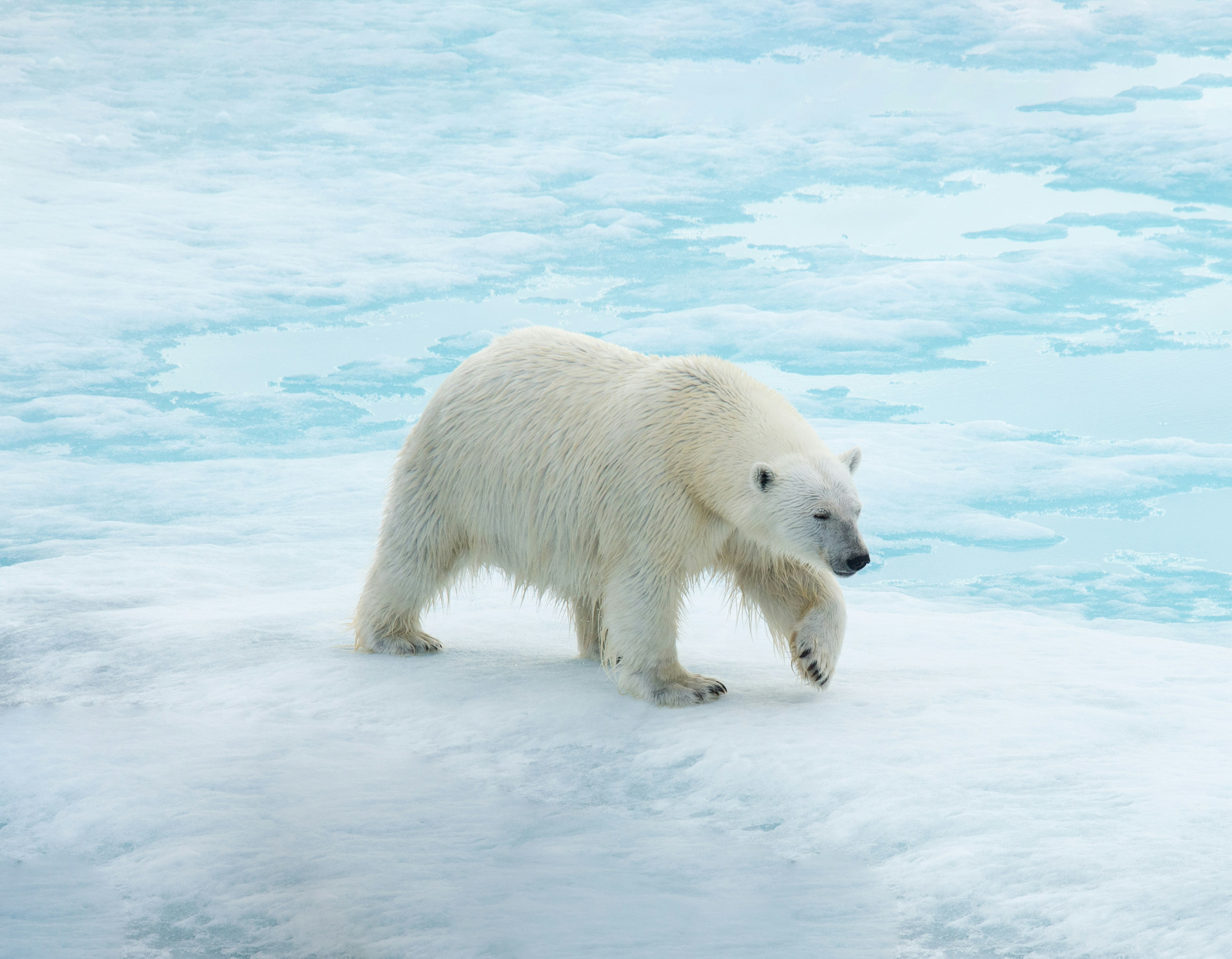The polar bear (Ursus maritimus) takes its Latin name from the words for 'bear' and 'sea', meaning the bear of the sea. Also known as the ice bear or white bear, this powerful predator is perfectly adapted to the frozen world of the Arctic. As the apex predator of the Arctic marine ecosystem, the polar bear spends most of its life on sea ice — hunting, travelling, and raising its young across the icy expanse of the Northern Hemisphere’s polar seas.
Although skilled swimmers, polar bears depend on the sea ice far more than the open water, using it as a platform to hunt seals, their primary prey. As true marine mammals, they rely on the ocean for almost every aspect of their existence.


Quick Polar Bear Facts
| Scientific name | Ursus maritmus |
| Length | 2 - 2.5 m (6.6 - 8.2 ft) |
| Weight | 300 - 800 kg (661.4 - 1,763.7 lbs) |
| Population | 25,000 individuals |
| Species Conservation Status | Vulnerable |
Diet and Behaviour
Polar bears are highly specialised hunters. Their diet consists mainly of seals, particularly ringed and bearded seals, which they catch by waiting patiently beside breathing holes or breaking through thin ice. They will also opportunistically feed on birds, eggs, and the occasional small cetacean (such as beluga or narwhal carcasses).
Their keen sense of smell allows them to detect prey nearly a kilometre away or beneath several feet of compacted snow. Solitary by nature, polar bears can travel vast distances across the ice in search of food, sometimes covering hundreds of kilometres in a single journey. Despite their immense strength and size, they are remarkably agile swimmers, capable of paddling for hours between ice floes.
Breeding Cycle
Polar bears generally mate between April and June, with delayed implantation allowing the fertilised egg to pause development until conditions are ideal. Pregnant females build dens in snowdrifts during autumn, where they give birth to one to three cubs, between November and January.
Cubs remain in the den for several months, nursing on rich, fatty milk until they are strong enough to venture outside in spring. Family groups stay together for about two and a half years before the young bears set off to establish their own territory.
.jpg?language=en&auto=format&w={width}&fit=fillmax)
Polar Bear FAQs
Where do polar bears live?
Polar bears are found throughout the Arctic Circle, including areas of Canada, Greenland, Norway, Svalbard, Russia, and Alaska. They depend heavily on sea ice for hunting and travel.
What do polar bears eat?
Their diet consists mainly of seals, but they also feed on birds, eggs, fish, and sometimes whale carcasses.
Can polar bears swim long distances?
Yes. Polar bears are strong swimmers and can cover over 60 kilometres (37 miles) at a stretch, using their large front paws to paddle and their back legs to steer.
How long do polar bears live?
In the wild, polar bears usually live around 20–25 years, though some can reach 30 years or more.
Are polar bears endangered?
Polar bears are listed as Vulnerable by the IUCN, primarily due to loss of sea ice from climate change, which reduces their ability to hunt and breed.
.jpg?language=en&auto=format&w=500&fit=fillmax)
















